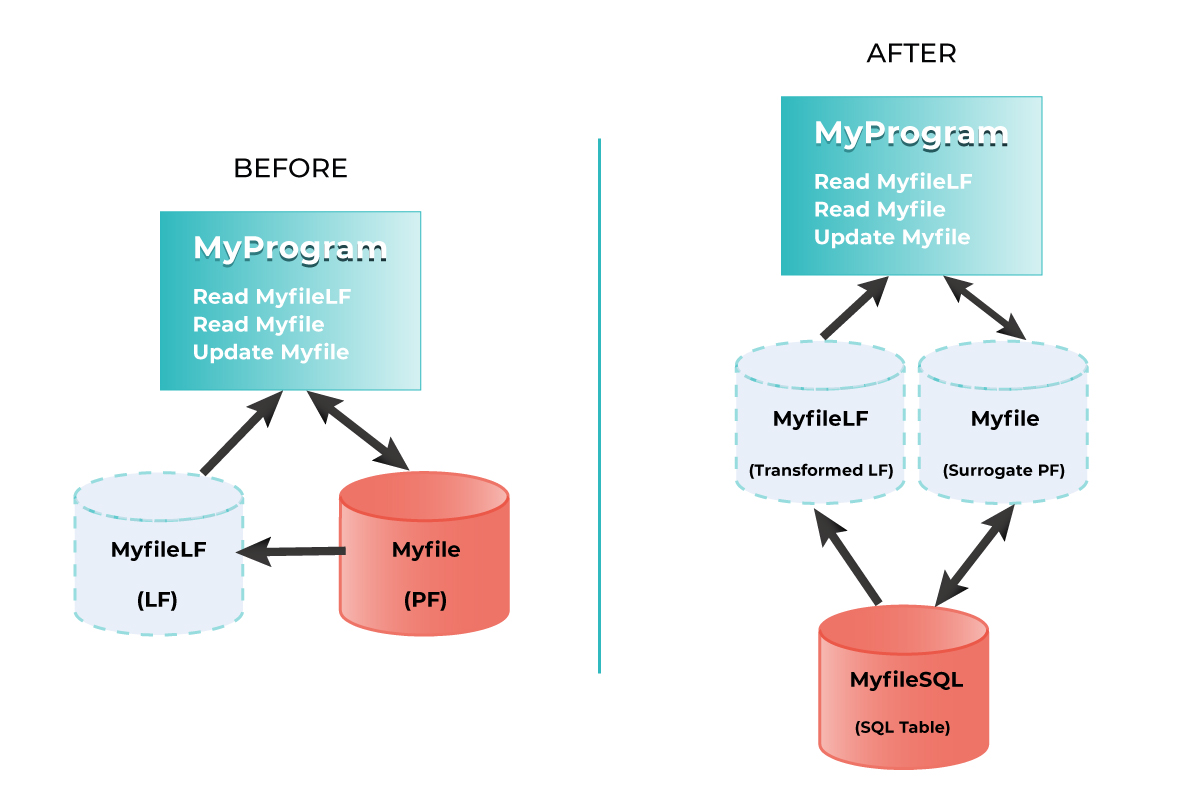The LF Surrogate technique allows to re-engineer the database from DDS to DDL without needing to recompile the applications.
For each Physical File that is re-engineered into an SQL table, a Logical File called an LF Surrogate is generated. Existing applications will now address the Surrogate LF that has replaced the Physical File and will continue to function as before, EXCEPT that they will write and read data in the new SQL table.
